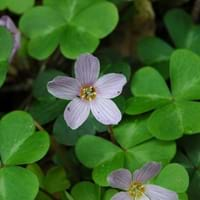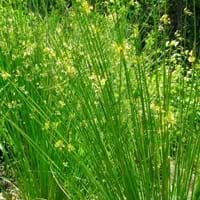Life Span
Perennial
Perennial
Type
Perennial
Sedge or Rush
Origin
Western United States, Canada
World/Pandemic, North America, Europe, Russia/Siberia, Africa, Asia
Types
not available
austrocalifornicus , effusus , laxus , pacificus , solutus
Number of Varieties
Not Available
Habitat
Moist woods, Redwood forests
All sorts of environments, Banks, ditches, marshes, Shores of rivers or lakes
USDA Hardiness Zone
7-9
6-9
Sunset Zone
4, 5, 6, 7, 8, 9, 14, 15, 16, 17, 18, 19, 20, 21, 22, 23, 24
H1, 1a, 1b, 2a, 2b, 3a, 3b, 4, 5, 6, 7, 8, 9, 10, 11, 12, 13, 14, 15, 16, 17, 18, 19, 20, 21, 22, 23, 24
Habit
Spreading
Clump-Forming
Flower Color
White, Purple, Pink, Lavender
Brown
Flower Color Modifier
Bicolor
Bicolor
Fruit Color
Not Available
Non Fruiting Plant
Leaf Color in Spring
Green
Green
Leaf Color in Summer
Green
Green
Leaf Color in Fall
Green
Green
Leaf Color in Winter
Light Green
Green, Tan, Sandy Brown
Leaf Shape
Heart-shaped
Long hair-like leaves
Plant Season
Spring, Summer, Fall, Winter
Spring, Summer, Fall, Winter
Sunlight
Partial Sun, Partial shade, Full Shade
Full Sun, Partial Sun
Growth Rate
Very Fast
Fast
Type of Soil
Loam
Clay, Loam, Sand
The pH of Soil
Acidic, Neutral
Acidic, Neutral
Soil Drainage
Average
Poorly Drained
Bloom Time
Early Spring, Spring, Late Spring, Early Summer, Summer, Late Summer, Early Fall, Fall
Early Summer, Summer, Late Summer, Early Fall
Tolerances
Drought
Drought
Where to Plant?
Container, Ground, Pot
Ground
How to Plant?
Divison, Seedlings
Divison, reseeds
Plant Maintenance
Low
Medium
Watering Requirements
Average Water Needs, Medium
Does not require regular watering
In Summer
Ample Water
Lots of watering
In Spring
Adequately
Moderate
In Winter
Moderate
Average Water
Soil pH
Acidic, Neutral
Acidic, Neutral
Soil Type
Loam
Clay, Loam, Sand
Soil Drainage Capacity
Average
Poorly Drained
Sun Exposure
Partial Sun, Partial shade, Full Shade
Full Sun, Partial Sun
Pruning
Remove damaged leaves, Remove dead branches, Remove dead leaves
Prune to control growth, Remove damaged leaves, Remove dead branches, Remove dead leaves
Fertilizers
All-Purpose Liquid Fertilizer
All-Purpose Liquid Fertilizer
Pests and Diseases
Red blotch
Free of serious pests and diseases
Plant Tolerance
Drought
Drought
Flowers
Yes
Insignificant
Flower Petal Number
Single
Single
Foliage Texture
Medium
Fine
Foliage Sheen
Matte
Glossy
Invasive
Sometimes
Sometimes
Attracts
Not Available
Bumblebees, Flying insects
Allergy
Not Available
Unknown
Aesthetic Uses
Ground Cover
Informal Hedge, Woodland margins
Beauty Benefits
Not Available
Not Available
Environmental Uses
Air purification, Provides ground cover
Air purification
Medicinal Uses
Antirheumatic, Boils, Opthalmic, Rheumatism, Sore Eyes, Swelling
No Medicinal Use
Part of Plant Used
Flowers, Leaves
Not Available
Other Uses
Culinary use, Employed in herbal medicine, Used As Food, Used for fragrance
woven into the covering of tatami mats
Used As Indoor Plant
No
No
Used As Outdoor Plant
Yes
Yes
Garden Design
Groundcover, Wildflower
Bog Garden, Container, Mixed Border, Water Gardens
Botanical Name
OXALIS oregana
JUNCUS effusus
Common Name
Redwood Sorrel
Soft Rush
In Hindi
Redwood Sorrel
Soft Rush
In German
Redwood Sorrel
Soft Rush
In French
Redwood Sorrel
Soft Rush
In Spanish
Redwood alazán
Soft Rush
In Greek
Redwood Sorrel
Soft Rush
In Portuguese
Redwood Sorrel
Soft Rush
In Polish
Redwood szczaw
Soft Rush
In Latin
Rumex Redwood
Soft Rush
Phylum
Magnoliophyta
Magnoliophyta
Class
Magnoliopsida
Liliopsida
Family
Oxalidaceae
Juncaceae
Clade
Angiosperms, Eudicots, Rosids
Angiosperms, Commelinids, Monocots
Tribe
Not Available
Not Available
Subfamily
Not Available
Not Available
Number of Species
Not Available
Not Available
Season and Care of Redwood Sorrel and Common Rush
Season and care of Redwood Sorrel and Common Rush is important to know. While considering everything about Redwood Sorrel and Common Rush Care, growing season is an essential factor. Redwood Sorrel season is Spring, Summer, Fall and Winter and Common Rush season is Spring, Summer, Fall and Winter. The type of soil for Redwood Sorrel is Loam and for Common Rush is Clay, Loam, Sand while the PH of soil for Redwood Sorrel is Acidic, Neutral and for Common Rush is Acidic, Neutral.
Redwood Sorrel and Common Rush Physical Information
Redwood Sorrel and Common Rush physical information is very important for comparison. Redwood Sorrel height is 10.20 cm and width 30.00 cm whereas Common Rush height is 45.70 cm and width 61.00 cm. The color specification of Redwood Sorrel and Common Rush are as follows:
Redwood Sorrel flower color: White, Purple, Pink and Lavender
Redwood Sorrel leaf color: Green
Common Rush flower color: Brown
- Common Rush leaf color: Green
Care of Redwood Sorrel and Common Rush
Care of Redwood Sorrel and Common Rush include pruning, fertilizers, watering etc. Redwood Sorrel pruning is done Remove damaged leaves, Remove dead branches and Remove dead leaves and Common Rush pruning is done Prune to control growth, Remove damaged leaves, Remove dead branches and Remove dead leaves. In summer Redwood Sorrel needs Ample Water and in winter, it needs Moderate. Whereas, in summer Common Rush needs Lots of watering and in winter, it needs Average Water.





